Solar projects are often assumed to be silent, but noise from inverters, transformers and energy storage systems can be difficult to fix if not addressed during the design phase, and even pose reputational harm to the solar industry.
“The notion that solar projects don’t create noise is not correct,” Michael Bahtiarian, a noise control engineer at acoustics consultancy Acentech and the former president of the Institute of Noise Control Engineering told pv magazine USA. “All solar sites need a noise analysis.”
In solar installations, central inverters and substation transformers are the predominant source of sound, and “inverters are the most problematic,” Bahtiarian said.
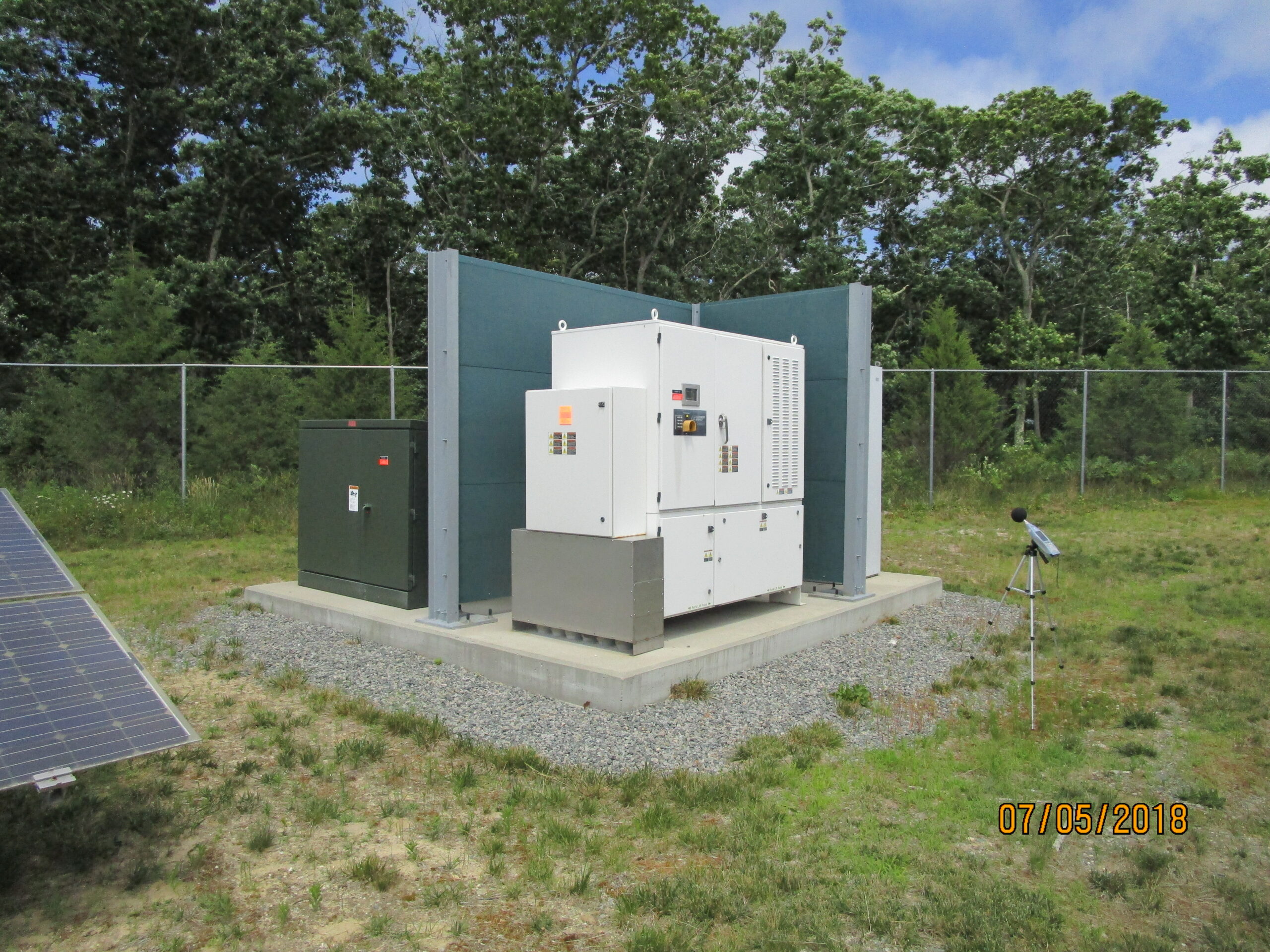
Michael Bahtiarian
Inverters and transformers produce low frequency sounds, which have longer wavelengths. “The larger the wavelength, the bigger the barrier to block long wavelengths” needs to be, Bahtiarian said.
Zoning confusion is a frequent, costly issue
Sound can be a particular issue when solar projects are near residential areas, Bahtiarian said.
Noise limits vary in restrictiveness depending on the location, the land’s zoning and whether it is day or evening hours.
“You’ll find that most of the municipal noise codes at residential properties are somewhere between 40 decibels at night and maybe 50 decibels during the day,” he said, adding that quieter communities can sometimes have noise limits as low as the mid-30s. For reference, a ticking watch is around 20 decibels, a refrigerator humming is usually around 40 decibels, and a vacuum is roughly between 70 decibels and 80 decibels.
Industrial zone limits are often higher than commercial and residential zones and don’t always have quieter limits for night. However, this doesn’t mean a project in a 70 decibel industrial zones is in compliance at 70 decibels, he noted. “There is a line where one inch one way it has to be 70 decibels and one inch the other way has to be 50 decibels,” Bahtiarian said. “So at that property line, you really need to be at 50 decibels.”
The transition from industrial zoning to residential zoning, or commercial zoning to residential zoning is a frequent issue, he said. Many of these could have been avoided from the outset by flipping the design so that the equipment wasn’t right up to the property line, inches from a residential zone. Had they considered acoustics on day one, “they never, ever would have had a problem,” he said.
When projects are found out of compliance, it’s usually not an overnight fix, he said. Even for solutions that sound simple, “there [are] other things that have to happen to get it engineered right,” he said. “Typically, these things could take many, many months to maybe years and years depending on the situation.”
According to a recent study from the University of Louisiana at Lafayette and Louisiana State University, central inverters should be located at least 147 feet away from neighboring properties to remain below 55 decibels the day, and substation transformers should be located at least 196 feet away to remain below 45 decibels at night. Though the study said these distances are fairly conservative, they would almost certainly vary depending on the specific solar project.
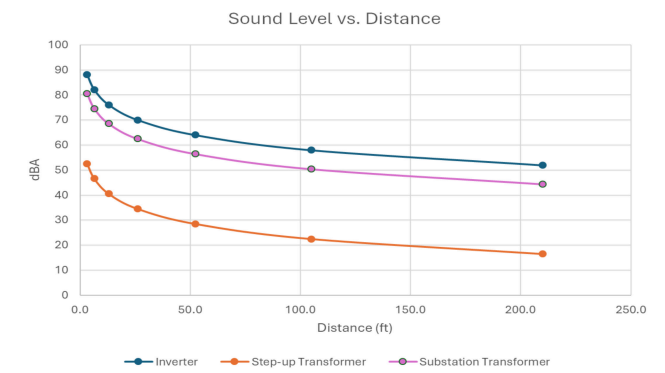
A brief study of the acoustic impacts of solar power generation facilities: University of Louisiana at Lafayette and Louisiana State University
In compliance, but a reputational risk
Even when solar projects are in compliance with noise ordinances, noise heard by nearby properties can pose a reputational risk for the solar industry. For example, according to the Connecticut Mirror, residents who had originally been proponents of a 4.9 MW project in Connecticut immediately began to lodge complaints about the project’s noise.
Legally, NextEra, the project’s owner was not required to mitigate the noise because the town’s zoning regulations did not apply to the project. But when a solar project was proposed on farmland by another developer in the bordering town, residents opposed the project, citing in part the noise that was left unmitigated by NextEra’s nearby project.
Battery energy storage manufacturers struggle with sound measurements
Noise-control engineers rely on equipment manufacturers’ sound specs to simulate noise levels before projects are built. They can do this with a high degree of accuracy thanks to the knowledge solar manufacturers have acquired in conducting accurate sound measurements.
Battery energy storage, which Bahtiarian said produces significant sound, is relatively young compared to inverter and transformer manufacturers, and measuring sound is complex and technical.
“Battery energy manufacturers still have not learned how to do the sound measurements of the equipment, and it’s kind of complicated, a little more complicated than you might think,” he said.
Bahtiarian said that while there are methods and standards for how to do these particular sound measurements, such as ISO 3744, “the equipment manufacturers have not gotten to that kind of knowledge ability,” he said. Relative to solar manufacturers, “they’re all new startups,” he noted, “but now we’re at the point where we need to know what the sound of [the equipment] is accurately, and a lot of the data that we get is really hard to use because it’s not been documented properly.”
Bahtiarian said he has talked with the new Codes and Standards Committee at Solar Energy Industries Association (SEIA) about developing best practices for the industry. The first one would help manufacturers do proper sound measurements for battery modules. The other, he said, would be broader and heard toward developers doing sighting.
“Until then, it’s a new space for battery manufacturers,” he said. “They don’t have the knowledge they need to measure sound. They found there’s an ISO standard for doing it and they’re quoting that standard, but they’re not carrying out the procedure properly, so the results we get are very hard to work with.”
“The ISO standard is very technical,” he noted, and battery manufacturers “just maybe are overwhelmed with how to what this should look like,” he said. “Somebody needs to just say ‘this is what you do. You do ABC and this is what the outcome should be.”
Until then, “they’re just kind of trying to figure it out on their own.”
This content is protected by copyright and may not be reused. If you want to cooperate with us and would like to reuse some of our content, please contact: editors@pv-magazine.com.
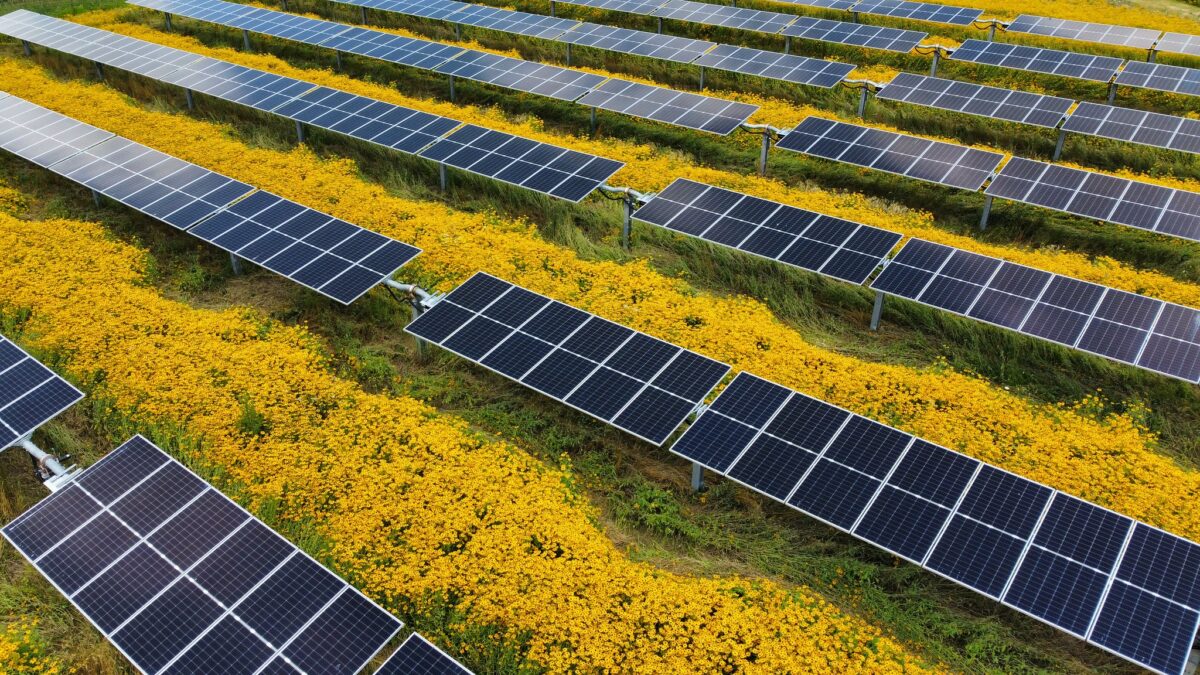
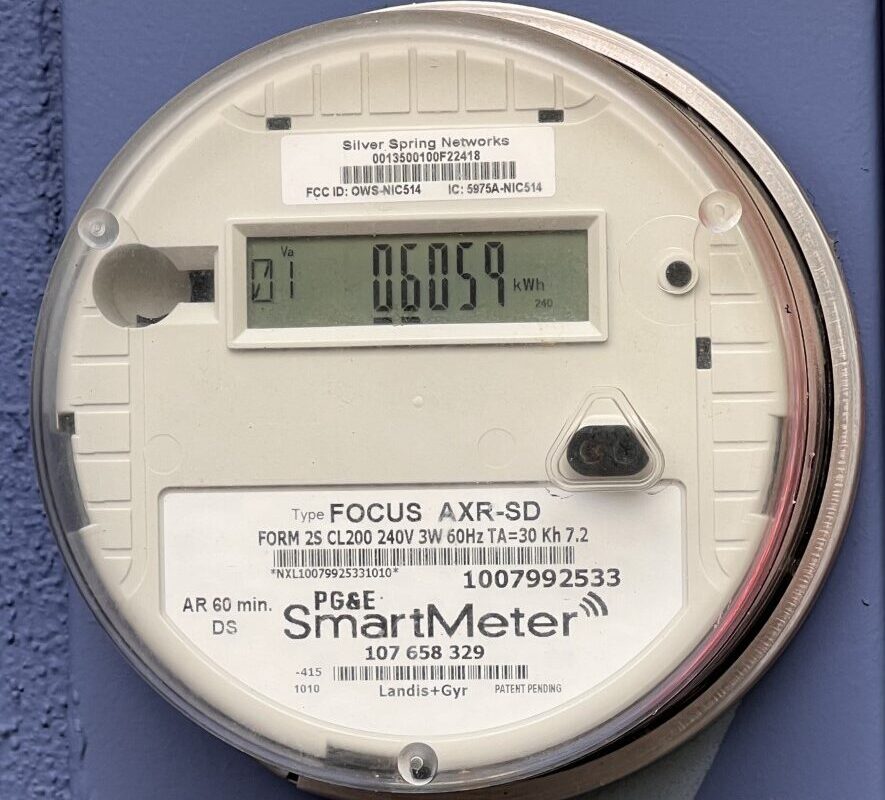


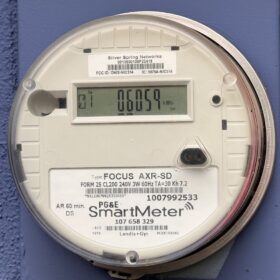
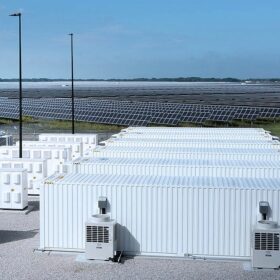
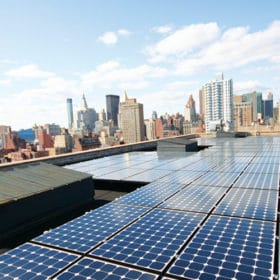
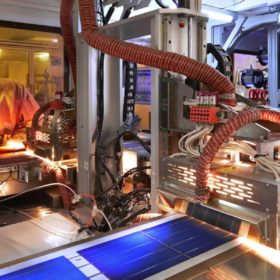

By submitting this form you agree to pv magazine using your data for the purposes of publishing your comment.
Your personal data will only be disclosed or otherwise transmitted to third parties for the purposes of spam filtering or if this is necessary for technical maintenance of the website. Any other transfer to third parties will not take place unless this is justified on the basis of applicable data protection regulations or if pv magazine is legally obliged to do so.
You may revoke this consent at any time with effect for the future, in which case your personal data will be deleted immediately. Otherwise, your data will be deleted if pv magazine has processed your request or the purpose of data storage is fulfilled.
Further information on data privacy can be found in our Data Protection Policy.